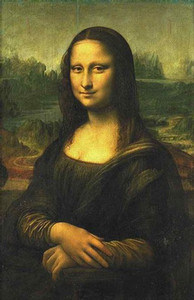Share
Citizen Journalist
The proliferation of the Internet, cellphones, and the turning point of Sept. 11 have made Citizen Journalism more than the soup d’jour. Sept. 11...


The proliferation of the Internet, cellphones, and the turning point of Sept. 11 have made Citizen Journalism more than the soup d’jour. Sept. 11 was allegedly the most photographed single news event in history — captured by professionals and amateurs alike (including yours truly). The London Underground bombing’s most iconic images were taken with a cellphone in darkness.
The proliferation of blogs and podcasts have made it possible for everyone to stand on a soap box and issue their rants, wax poetic with critiques, and report the news. Wikipedia has allowed the masses to collaboratively form a collective knowledge store. Finally, the democratization of technology has brought truth to the world!
Or has it?
Stephen Colbert of Comedy Central’s Colbert Report recently hacked his own Wikipedia entry, and encouraged viewers to change entries on elephants to reflect certain untruths. As he has astutely pointed out in the past, “truthiness” isn’t “truth,” it’s merely what the squeaky wheel proclaims to be true.
The proliferation of cellphones, digital point and shoots, and D-SLRs has made everyone a photographer. I would never dissuade anyone from taking a picture, or pursuing photography as a passion, but the bottom line is that there is a gamut of talent in the world, and not everyone can be the best.
So I am concerned with the proliferation of sites like CNN’s Exchange and Citizen Image whose main value proposition is that everyone ought to contribute to the news. Jim from Indiana sent in this image of a squirrel allegedly “trying to stay cool during the blistering heat wave,” but the fact of the matter is that since Jim is most likely not a trained news person, and doesn’t have an editorial board that creates a standard of ethics, nor a DOP and picture editors who provide guidance, we get images like these that are supposed to represent news.
What if the squirrel wasn’t trying to stay cool? Perhaps the squirrel was resting, or was sick from a non-heat related matter. More significantly, CNN decided to publish this as news because presumably it had nothing more interesting to put up. Its reliance on voluntary contributions drive the news in this area of the site, and therefore investigative reporting is almost necessarily dissuaded. The squirrel isn’t news. A photo of a squirrel is , at best, a terrible feature.
In a generic sense, anyone can report news. Anyone can review a movie. Anyone can criticize art or music. And popular opinion doesn’t often coincide with critical acclaim for the simple reason that popular opinion often caters to the lowest common denominator (e.g. Pirates of the Caribbean 2). Credibility is the cornerstone of news reporting, and the average citizen does not fact check, does not rely on multiple witnesses, and does not try to gleen a larger picture. They merely report on their own experience and perception of an event with very little experience to contextualize how information should be gathered and presented. A piece that doesn’t actively try to seek something beyond personal bias isn’t news, it’s an op/ed. It’s a journal entry.
If a citizen reporter takes a cellphone snapshot of a white van and sends it in to a citizen journalist site with the caption “terrorist van,” we have very little means of verifying the truth. We can only rely on the truthiness.
Everyone should keep taking pictures. But news services should stop trying to rely on free labor and content by dangling the carrot of being published as an excuse for not paying for content created by professionals. And we should avoid propagation of the belief that a “collective” contribution is really the truth. Some, but not all, truths are self-evident.


